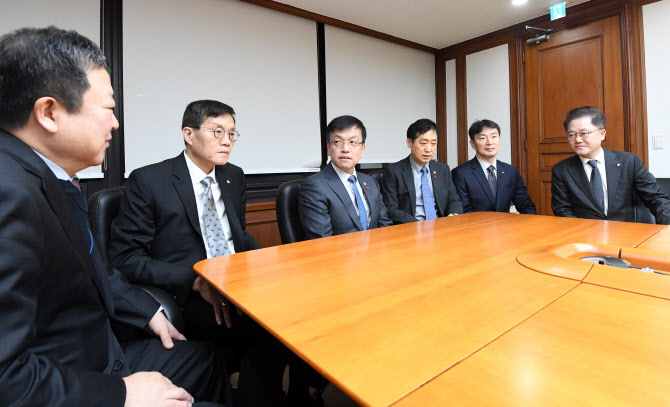Lotte Chemical, covered in risks, is the ‘best M&A’ LCPL is also facing the ‘Nakdong River duck egg’
Plan to sell subsidiary in Pakistan falls through, Lotte Chemical risks 'explode' I dreamed of ‘business reorganization’, but the reality was not easy Lotte denies PF liquidity crisis, but it will be difficult to resolve the ‘risk’

Lotte Chemical’s plan to sell its Pakistani subsidiary, which carries out non-core businesses such as the production of high-purity terephthalic acid (PTA), has been canceled. Initially, when Lotte Chemical purchased LCPL, it was considered the best M&A, recovering the entire acquisition price only through dividends within two years of acquisition, but as the internal atmosphere in Pakistan became turbulent, instability increased. Moreover, due to concerns over the financial structure of its subsidiary Lotte Engineering & Construction, the plan to raise corporate bonds was also abandoned. There appears to be a setback in the operation of the financial strategy since the beginning of the year, with a plan to raise liquidity worth 600 billion won being canceled.
Lotte Chemical LCPL stake sale ‘failed’
According to the Financial Supervisory Service’s electronic disclosure system on the 16th, Lotte Chemical announced that the sale of 75.01% of its subsidiary LCPL the previous day had been canceled. Regarding the reason for the cancellation of the sale, Lotte Chemical explained, “The approval of the business combination by Pakistan’s competition authorities to proceed with the stock purchase was delayed for a long time due to uncertainty in the local political and economic situation,” and “the counterparty terminated the contract.” In January last year, Lotte Chemical signed a contract to sell a 75.01% stake in LCPL to Pakistani chemical company Lucky Core for 192.4 billion won. This amount is well over 10 times the acquisition price (KRW 14.7 billion). LCPL is a company that produces ferrephthalic acid (PTA), a raw material for PET bottles and synthetic fibers. Lotte Chemical acquired LCPL from Dutch chemical company Aksonobel for 14.7 billion won in 2009, and immediately after the acquisition, it earned more than 20 billion won in dividend income from LCPL until 2011. LCPL subsequently posted a net profit of 10 to 50 billion won. This is why investment banking (IB) officials say Lotte Chemical’s acquisition of LCPL is “the best M&A deal for Lotte Group.”
After the successful acquisition of LCPL, Lotte Group began scanning properties for sale in Pakistan. In 2011, Lotte Confectionery acquired Colson, a Pakistani confectionery company, and in 2018, Lotte Chilsung Beverage purchased Akhtar, a Pakistani beverage company. However, Lotte Chemical later viewed PTA as a non-core business and put LCPL up for sale. Following the collapse of M&A, financing through corporate bonds is also being disrupted. Lotte Chemical pursued the issuance of corporate bonds worth up to 400 billion won this month, but was found to have postponed the issuance due to the aftermath of the Taeyoung Construction workout. Taeyoung Construction’s workout also raised concerns about Lotte Construction’s financial difficulties. There is also analysis that it had an impact on the financing of Lotte Chemical, the largest shareholder of Lotte Engineering & Construction.
The fall of ‘cash-rich’ Lotte Chemical
Recently, Lotte Chemical’s two capital market transactions fell through, creating a liquidity vacuum of up to 600 billion won. This is the downfall of Lotte Chemical, which was once known as ‘cash-rich’ and ‘the embodiment of debt-free management’. According to what is known, net borrowings as of the end of September last year were 4.6964 trillion won, the highest ever. As of the end of September last year, short-term borrowings maturing within one year reached KRW 3.7344 trillion, the highest at the end of the quarter. Although the debt ratio was at a low level of 63.9% at the end of last year, the fact that many of the assets held are petrochemical facilities is not enough to immediately turn into cash. Performance also did not avoid a decline. Last year’s operating profit consensus was -119.7 billion won, which is estimated to have recorded a deficit for two consecutive years following 2022.
Initially, Lotte Chemical planned to liquidate low-profit businesses and start a process to turn a full-fledged profit. This is because Lotte Chemical said in November last year, “In line with the rapid international situation and changes in the chemical industry, we will pursue maximum profitability and optimize efficiency in existing businesses, such as expanding high-value specialty products, and proceed with battery materials, hydrogen energy, and recycling businesses as planned.” It can be seen that it was mentioned. At the time, Lotte Chemical had already completed the sale of its PTA production subsidiary in Pakistan and factories in China, so it was expected that the reorganization would be smooth, but as the buyer completely backed out, Lotte Chemical’s goal was completely derailed. Future plans such as breaking away from the petrochemical industry and reorganizing the business structure to focus on ‘battery materials, hydrogen energy, and recycling’ have become virtually impossible.

Lotte faced with liquidity crisis, ‘agent’ to resolve risks
Moreover, Lotte has recently been in a liquidity crisis due to Lotte Engineering & Construction’s real estate project financing (PF) debt problem. On the 4th, Korea Credit Rating selected Lotte Engineering & Construction, GS Engineering & Construction, and Shinsegae Engineering & Construction as the construction companies related to PF contingent liabilities among the four construction companies selected as major monitoring targets at the ‘2024 Korea Credit Rating Industry Outlook’ webinar on the 4th. Lotte Engineering & Construction ranked 8th in last year’s construction capability evaluation. In a situation where high interest rates and an economic recession are combined, the risk of contingent liabilities is increasing due to the delay of the scheduled PF project and the resulting accumulation of financial costs, and not only Lotte E&C but the Lotte Group itself appears to be shaking.
In particular, Lotte Engineering & Construction received an assessment from Hana Securities that it could face a liquidity crisis due to PF contingent liabilities. Hana Securities said, “Compared to the specific situation of KRW 3.2 trillion worth of unstarted PF that will mature by the first quarter of this year, the current cash assets (KRW 2.2591 trillion) and borrowings maturing within one year (KRW 2.1 trillion) ) Considering the scale, the risk is high.” According to Hana Securities, of Lotte Engineering & Construction’s unstarted PF, areas other than Seoul amount to 2.5 trillion won. Hana Securities explained that a conservative perspective is needed to convert this unstarted PF into this PF with low risk, based on the uncertainty of the subscription success outside of Seoul.
Lotte Engineering & Construction completely denied the related comments. A financing plan has already been established to resolve concerns about contingent liabilities of 3.2 trillion won worth of PF that has not yet begun construction, and local PF business sites that have not yet begun construction are also said to have excellent sales potential, such as in Haeundae-gu, Busan. In addition, it was emphasized that there is no problem in managing PF contingent liabilities based on the fact that financial stability has been improved through reductions in borrowings and debt ratios, and most of the extension agreements for short-term borrowings have been completed. However, from an external perspective, Lotte Engineering & Construction is still in danger. Moreover, Lotte Engineering & Construction’s largest shareholder is currently Lotte Chemical. This means that if Lotte Engineering & Construction actually falls into financial difficulties in the future, Lotte Chemical may also be hit one after another. Although experts are still divided on whether concerns about PF contingent liabilities will materialize, it appears that it will be difficult to resolve the risks surrounding Lotte Engineering & Construction and Lotte Chemical unless related concerns are completely resolved.









 네이버계정으로 로그인하기
네이버계정으로 로그인하기
 카카오톡 계정으로 로그인하기
카카오톡 계정으로 로그인하기
